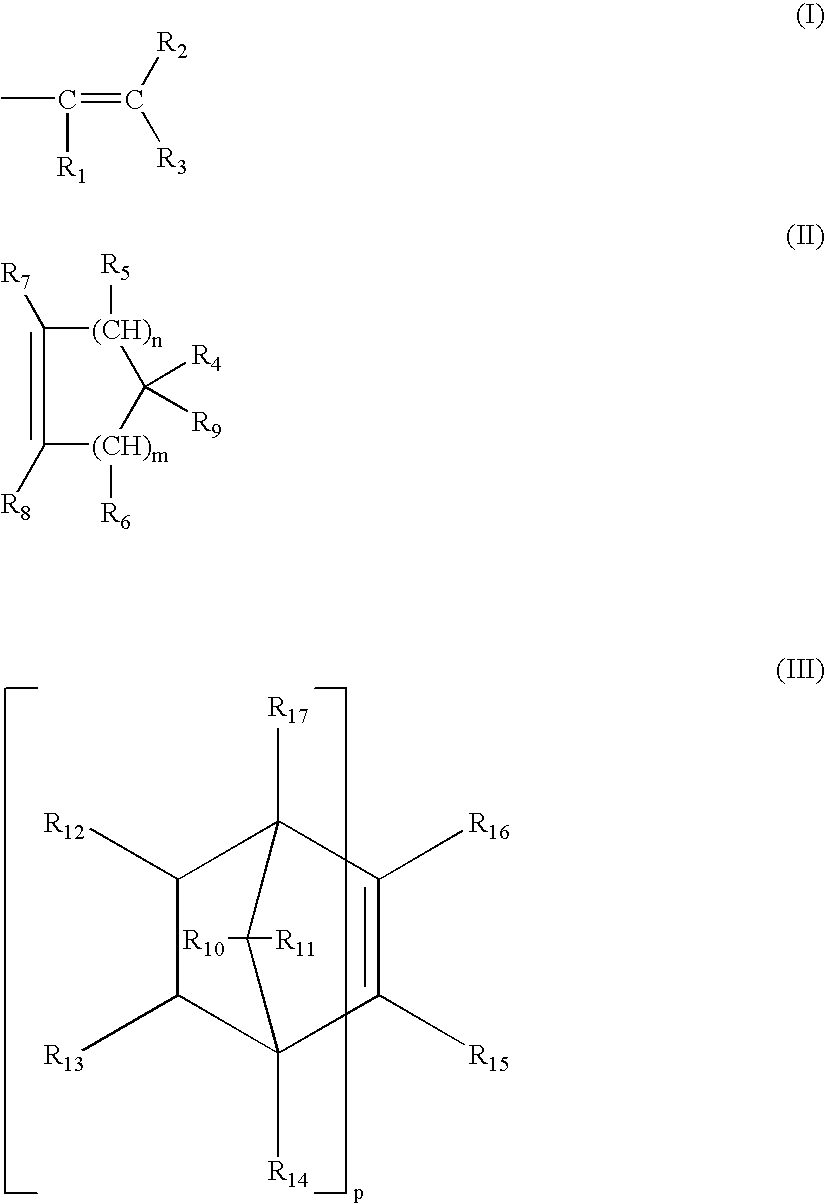Method for imparting hydrogel contact lenses with desired properties
a hydrogel contact lens and desired technology, applied in the field of contact lenses, can solve the problems of no commercially available contact lenses, especially extended-wear contact lenses, infection or other deleterious effects on the ocular health of the eye,
- Summary
- Abstract
- Description
- Claims
- Application Information
AI Technical Summary
Benefits of technology
Problems solved by technology
Method used
Image
Examples
example 1
[0116]Unless otherwise stated, all chemicals are used as received. Oxygen and ion permeability measurements are carried out with lenses after extraction and plasma coating.
[0117]Oxygen permeability measurements. The oxygen permeability of a lens and oxygen transmissibility of a lens material is determined according to a technique similar to the one described in U.S. Pat. No. 5,760,100 and in an article by Winterton et al., (The Cornea: Transactions of the World Congress on the Cornea 111, H. D. Cavanagh Ed., Raven Press: New York 1988, pp. 273-280), both of which are herein incorporated by reference in their entireties. Oxygen fluxes (J) are measured at 34° C. in a wet cell (i.e., gas streams are maintained at about 100% relative humidity) using a Dk1000 instrument (available from Applied Design and Development Co., Norcross, Ga.), or similar analytical instrument. An air stream, having a known percentage of oxygen (e.g., 21%), is passed across one side of the lens at a rate of abou...
example 2
Synthesis of Macromer
[0128]51.5 g (50 mmol) of the perfluoropolyether Fomblin® ZDOL (from Ausimont S.p.A, Milan) having a mean molecular weight of 1030 g / mol and containing 1.96 meq / g of hydroxyl groups according to end-group titration is introduced into a three-neck flask together with 50 mg of dibutyltin dilaurate. The flask contents are evacuated to about 20 mbar with stirring and subsequently decompressed with argon. This operation is repeated twice. 22.2 g (0.1 mol) of freshly distilled isophorone diisocyanate kept under argon are subsequently added in a counterstream of argon. The temperature in the flask is kept below 30° C. by cooling with a waterbath. After stirring overnight at room temperature, the reaction is complete. Isocyanate titration gives an NCO content of 1.40 meq / g (theory: 1.35 meq / g).
[0129]202 g of the α,ω-hydroxypropyl-terminated polydimethylsiloxane KF-6001 from Shin-Etsu having a mean molecular weight of 2000 g / mol (1.00 meq / g of hydroxyl groups according t...
example 3
Preparation of Stabilized Silver Nanoparticle Solutions
[0132]Stabilized silver nanoparticle solutions are prepared by mixing an aqueous stabilizer (for example, polyacrylic acid (PAA), or polyethylenimine (PEI), or polyvinyl pyrrolidone (PVP), etc) and silver nitrate solution. Then this mixture solution of stabilizer and silver nitrate is added slowly into a solution containing a reducing agent. Some examples of reducing agents are sodium borohydride (NaBH4) or ascorbic acid (also known as vitamin C, VC). Solutions of various silver concentrations and pHs can be prepared. For examples, the silver concentration can vary from 0.1 mM to 100 mM; pH can be adjusted from 1.0 to 10.0. The molar ratio of the stabilizer to silver can also vary from 0.5 / 1 to 10 / 1. The ratio of silver to the reducing agent can also be adjusted, for example, from 4 / 1 to 1 / 10. Different molecular weight for PAA, PEI or PVP can be used.
[0133]As an example, a PAA stabilized silver nanoparticle solution is prepared...
PUM
| Property | Measurement | Unit |
|---|---|---|
| temperature | aaaaa | aaaaa |
| molecular weights | aaaaa | aaaaa |
| size | aaaaa | aaaaa |
Abstract
Description
Claims
Application Information
 Login to View More
Login to View More - R&D
- Intellectual Property
- Life Sciences
- Materials
- Tech Scout
- Unparalleled Data Quality
- Higher Quality Content
- 60% Fewer Hallucinations
Browse by: Latest US Patents, China's latest patents, Technical Efficacy Thesaurus, Application Domain, Technology Topic, Popular Technical Reports.
© 2025 PatSnap. All rights reserved.Legal|Privacy policy|Modern Slavery Act Transparency Statement|Sitemap|About US| Contact US: help@patsnap.com

